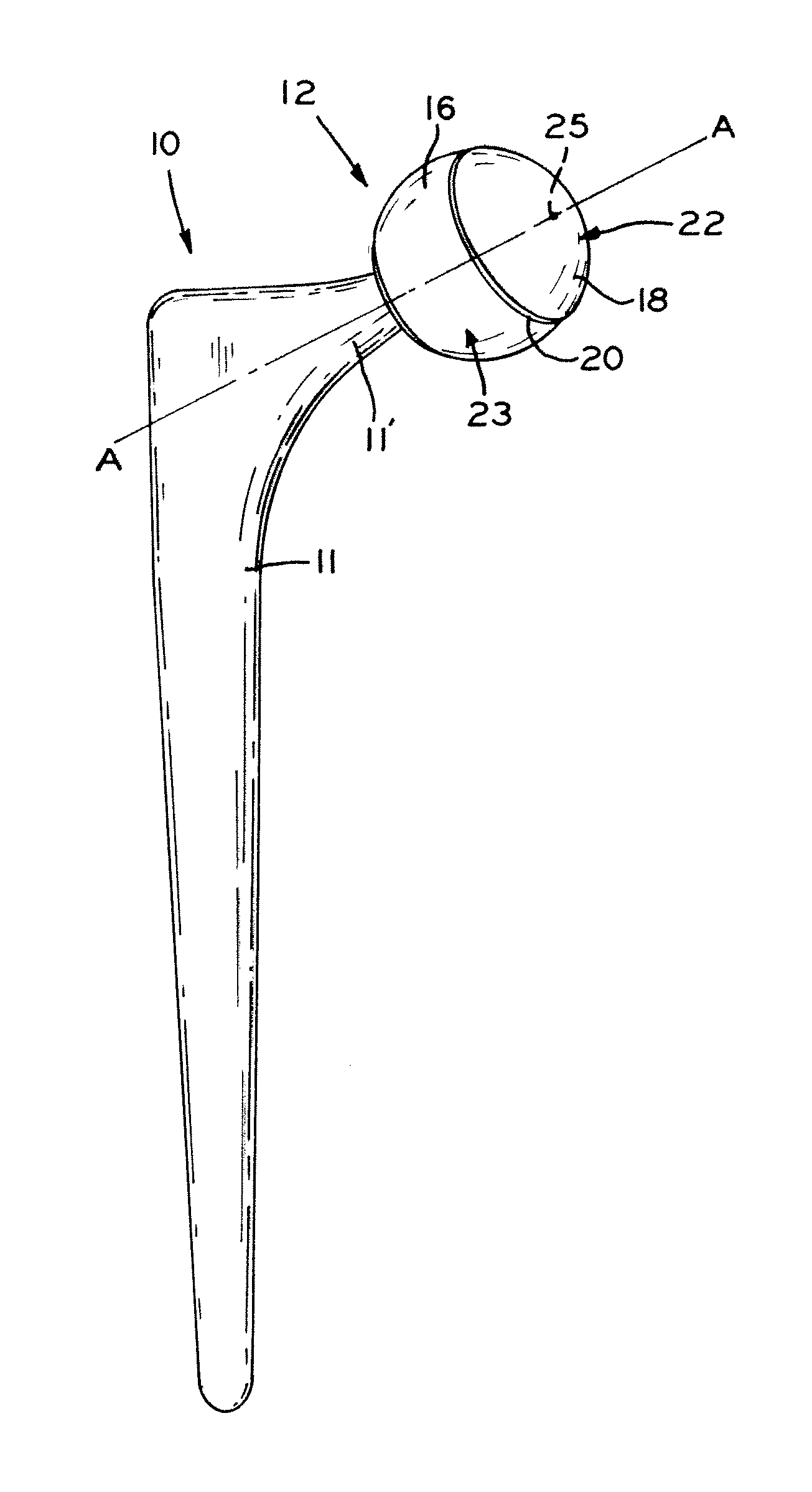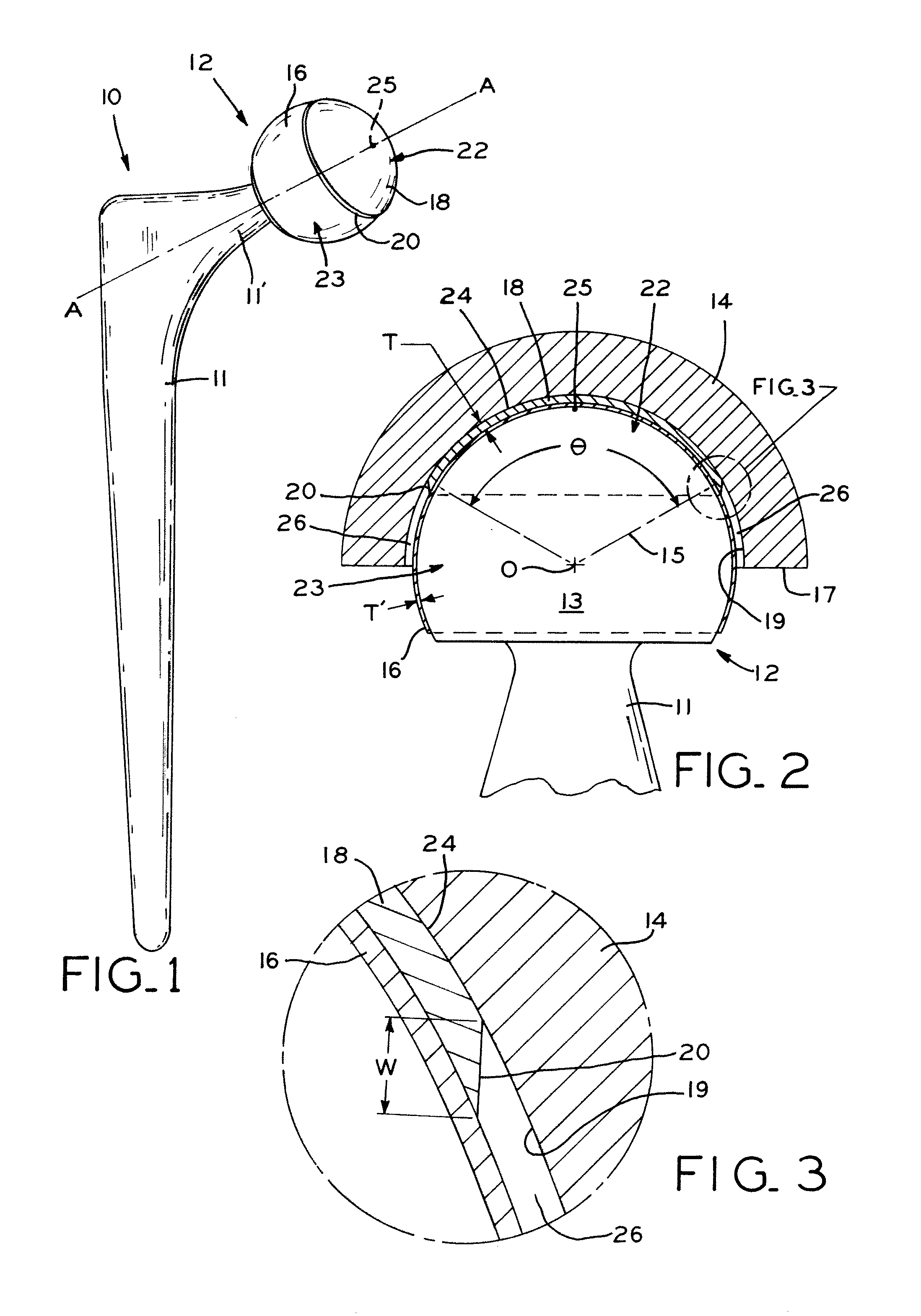Bi-material prosthesis component
a technology of prosthesis and bi-materials, applied in the field of joint replacement surgery, can solve the problems of extending affecting the service life of hip prosthesis, and releasing particulate material into the patient's body
- Summary
- Abstract
- Description
- Claims
- Application Information
AI Technical Summary
Benefits of technology
Problems solved by technology
Method used
Image
Examples
Embodiment Construction
[0039]Referring to FIG. 1, prosthesis 10 includes femoral component 11 with femoral head 12 attached at a proximal end thereof. Femoral head 12 includes substrate 13 (FIG. 2) including polar region 22 forming a “cap” on femoral head 12 proximate pole 25 (FIG. 2, discussed below) and equatorial region 23 forming an annular “band” disposed between femoral component 11 and polar region 22. Substrate 13 is made of a metallic material, such as titanium, titanium alloys, and other alloys including cobalt chromium and zirconium materials such as cobalt chrome molybdenum, for example. Femoral head 12 also includes polar coating 18 made of a ceramic material, with coating 18 disposed at polar region 22 of femoral head 12. An inner, optional coating 16 may extend over a portion of an outer surface of femoral head 12, such as over more than half of femoral head 12. Polar coating 18 is disposed at polar region 22 of femoral head 12 and extends over less than half of femoral head 12, as discusse...
PUM
| Property | Measurement | Unit |
|---|---|---|
| Thickness | aaaaa | aaaaa |
| Thickness | aaaaa | aaaaa |
| Angle | aaaaa | aaaaa |
Abstract
Description
Claims
Application Information
 Login to View More
Login to View More - R&D
- Intellectual Property
- Life Sciences
- Materials
- Tech Scout
- Unparalleled Data Quality
- Higher Quality Content
- 60% Fewer Hallucinations
Browse by: Latest US Patents, China's latest patents, Technical Efficacy Thesaurus, Application Domain, Technology Topic, Popular Technical Reports.
© 2025 PatSnap. All rights reserved.Legal|Privacy policy|Modern Slavery Act Transparency Statement|Sitemap|About US| Contact US: help@patsnap.com



